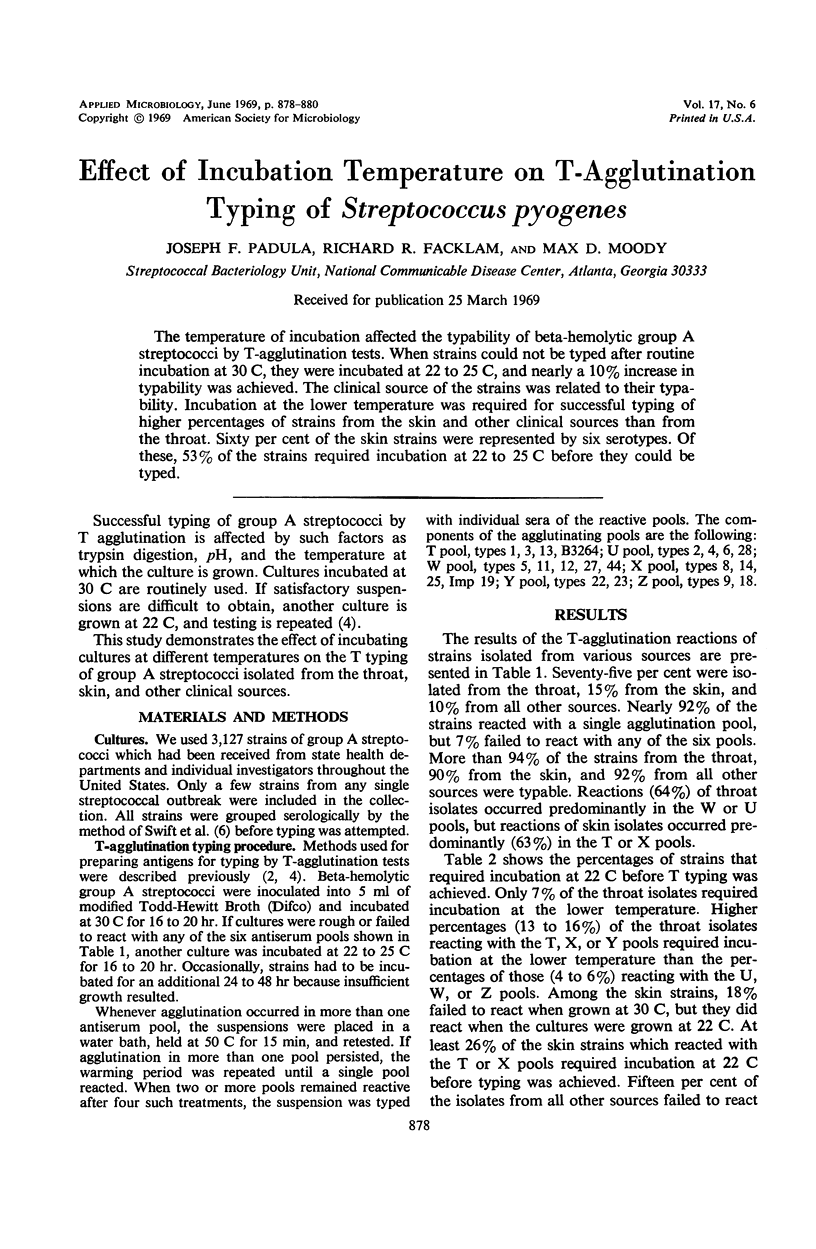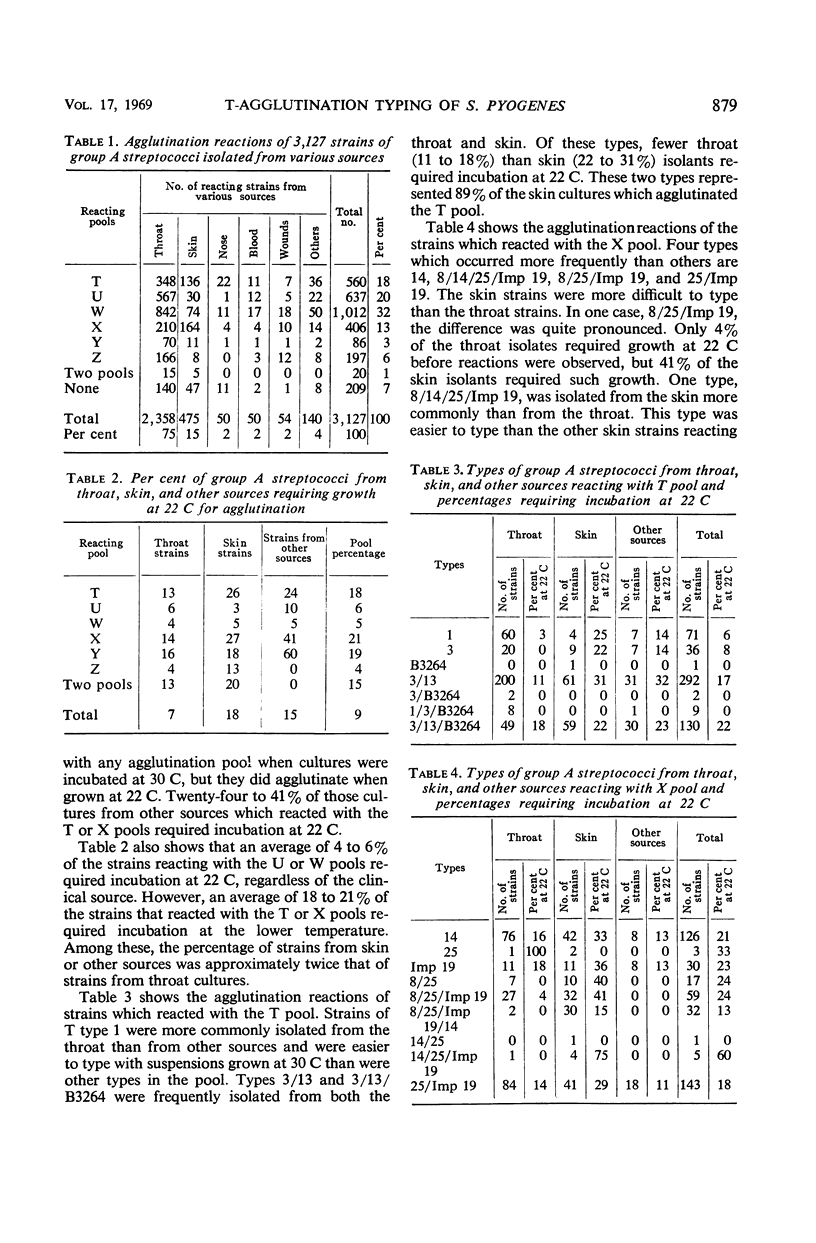Abstract
The temperature of incubation affected the typability of beta-hemolytic group A streptococci by T-agglutination tests. When strains could not be typed after routine incubation at 30 C, they were incubated at 22 to 25 C, and nearly a 10% increase in typability was achieved. The clinical source of the strains was related to their typability. Incubation at the lower temperature was required for successful typing of higher percentages of strains from the skin and other clinical sources than from the throat. Sixty per cent of the skin strains were represented by six serotypes. Of these, 53% of the strains required incubation at 22 to 25 C before they could be typed.
Full text
PDF


Selected References
These references are in PubMed. This may not be the complete list of references from this article.
- Bergner-Rabinowitz S., Sklut O., Haimowici E., Davies A. M. Streptococcal types in Israel hospitals. A four-year study. Isr J Med Sci. 1966 Jul-Aug;2(4):428–435. [PubMed] [Google Scholar]
- MOODY M. D., PADULA J., LIZANA D., HALL C. T. EPIDEMIOLOGIC CHARACTERIZATION OF GROUP A STREPTOCOCCI BY T-AGGLUTINATION AND M-PRECIPITATION TESTS IN THE PUBLIC HEALTH LABORATORY. Health Lab Sci. 1965 Jul;2:149–162. [PubMed] [Google Scholar]
- McLEAN S. J. Identification of strains of Streptococcus pyogenes of Types 5, 11, 12, 27 and 44 by the precipitin test for the T antigen. J Gen Microbiol. 1953 Aug;9(1):110–118. doi: 10.1099/00221287-9-1-110. [DOI] [PubMed] [Google Scholar]
- Wilson E., Zimmerman R. A., Moody M. D. Value of T-agglutination typing of group A streptococci in epidemiologic investigations. Health Lab Sci. 1968 Oct;5(4):199–207. [PubMed] [Google Scholar]


